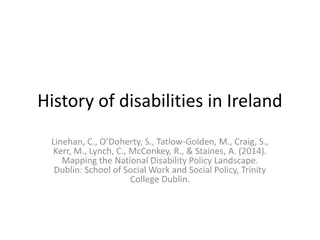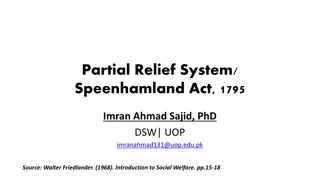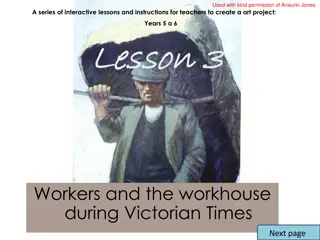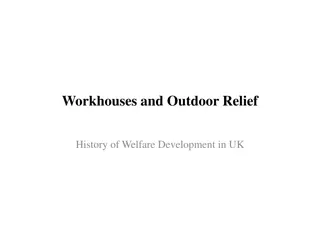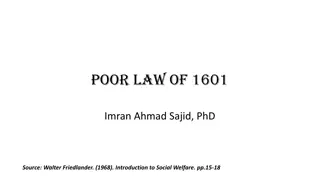Historical Development of Disability Services in Ireland
The history of services for people with disabilities in Ireland dates back to the 19th century with the establishment of workhouses and specialized institutions. Following political autonomy in 1922, the Irish state took on the responsibility for providing support to various vulnerable groups, inclu
2 views • 16 slides
Partial Relief System: Speenhamland Act 1795 Overview
In 1795, the Speenhamland Act was introduced as a partial relief system aimed at addressing poverty through measures such as workhouses, outdoor relief, and adjusting relief based on the cost of bread. The Act came in response to economic challenges and the impact of war, leading to debates on pover
0 views • 11 slides
Victorian Workhouse Sketch Project: Imagining Conditions and Lives
Unleash your creativity with a project focusing on sketching the conditions workers faced in Victorian workhouses. Listen carefully to descriptive text to envision the environment and emotions within the workhouse, depicting details such as building features and worker attire. Explore the haunting r
0 views • 5 slides
History of Welfare Development in UK: Workhouses and Outdoor Relief
During the 17th and 18th centuries, workhouses and outdoor relief systems in the UK faced challenges in providing effective assistance to the poor. Initiatives like training the poor in various skills and contracting paupers for work failed to yield economic success. Criticism arose due to mistreatm
0 views • 7 slides
Evolution of Poor Law in 1601 England
The Poor Law of 1601, also known as the 43 Elizabeth law, aimed to unify and codify existing poor laws in England. It established community responsibility for supporting the needy and emphasized the role of family in caring for their own. The law classified the poor into categories like able-bodied
0 views • 13 slides
